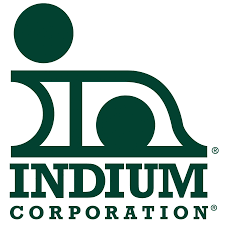
Rotate your smartphone to landscape or increase your browser width to see session descriptions.
Monday March 4, 2019
7:00 a
Continental Breakfast
Start the day right and enjoy the continental breakfast while networking with other attendees.
8:30 a
9:00 a

“Test Challenges Accepted: Billions of Transistors, 5G Mobile, and End-to-end Quality”
Welcome to 2019! This year’s test challenges include early 5G production testing for millimeter-wave parts, deployment of 1149.10 USB scan, and the continued and relentless development of advanced process nodes. Not to mention the industry drive for very low defective parts per million (DPPM). The complexity of mobile phones now include digital integrated circuits supporting billions of transistors and millimeter-wave technology in 5G phones.
New engineering issues in the test arena include:
- The cost, characterization, test, and quality challenges being faced by the test engineers will all have different avenues of attack for success, however, they also have many similarities. To successfully enable chips with high yield and low DPPM, requires new learning in the area of outlier detection, new test techniques, new test hardware, and the search for improved fault models to extend the life of existing design for testability (DFT) technologies.
- The IEEE 1149.10 high speed Test Access Port (TAP)/USB enabled scan changes the traditional concept of limited pin testing for DFT testing, eliminates slow scan speeds, and introduces the need to constrain power to limit thermal rise during structural testing.
- Millimeter-wave testing is not new. However, enabling mm-wave testing for the mobile phone market at the volume, cost, and quality levels required for success is a new challenge for the industry. Serious manufacturing concerns revolving around interference, stray sources of activation, and enabling the multiband and modes to support the mobile phone, parallelism in test, and a host of other challenges are rising to the surface as the industry gears up for 5G.
Many of the solutions will use advanced data analytics and statistics. However, these alone will not solve the test engineer’s problems but will be an important part of their toolkit. This keynote will explore these industry challenges as well as innovative solutions being found across the industry.
Keynote sponsored by Indium Corporation 
10:00 a
Break & Networking
Enjoy the break and networking time.
10:30 a
10:30 a
12:30 p
Lunch
Lunch is served. Enjoy the break and networking time.
1:30 p
1:30 p
3:30 p
4:30 p
4:30 p
6:00 p
TestConX EXPO & Reception
The TestConX EXPO is a very popular part of the TestConX program with many great exhibits for connecting electronic test professionals to solutions. There is always something new to see or someone new to meet. Not to mention excellent food, drinks, and time for attendees to network with exhibitors!
9:00 p
Adjourn
Program subject to change without notice.

